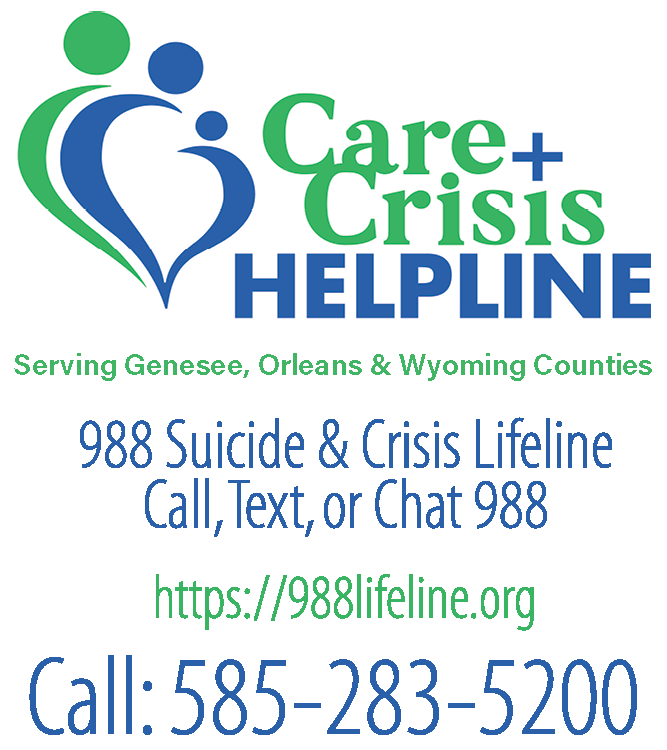Association of Counties warns of devastating impacts from federal cuts in Medicaid
Orleans has one of highest percentages of population on Medicaid, ACA in WNY
Press Release, NYS Association of Counties
ALBANY – The New York State Association of Counties (NYSAC) is sounding the alarm over proposed federal Medicaid cuts that could devastate New York’s healthcare system, threaten health coverage for millions of residents, and strain county governments already operating under significant fiscal pressure.
As part of its current budget drafting process, Congress is looking to reduce federal spending by $2 trillion over the next 10 years, with projected cuts of up to $880 billion coming from Medicaid. These cuts will have an inordinately large impact on New York, which spends over $100 billion a year on a Medicaid program that serves nearly half our population and fuels a health care industry that relies on the public health insurance program for its survival.
“We have several concerns about these Medicaid cost cutting proposals,” said NYSAC President Benjamin Boykin II. “They will put health care at risk for the New Yorkers we serve, strain financially sound hospitals, and cripple troubled health care centers. And also, high on our list is that when the federal government cuts Medicaid, state leaders will force county taxpayers to pick up more of their costs.”
Editor’s Note: Orleans has 35.9 percent of its population on Medicaid or the Affordable Care Act with 7,673 on Medicaid; 3,324 on ACA Medicaid Expansion; 2,897 on ACA Essential Plan; and 358 on ACA QUP. The number of those on Medicaid and ACA total in Orleans is at 14,252.
Among Western New York counties the percentages for Medicaid and ACA include:
- Allegany: 31.7 percent
- Cattaraugus: 34.3 percent
- Chautauqua: 37.1 percent
- Erie: 32.5 percent
- Genesee: 28.1 percent
- Livingston: 24.4 percent
- Monroe: 33.1 percent
- Niagara: 31.6 percent
- Orleans: 35.9 percent
- Wyoming: 27.8 percent
At the beginning of the Medicaid program over 50 years ago, New York counties were required to fund half of the state’s share of Medicaid. While mandated county funding is currently capped at $7.6 billion a year, local leaders are concerned that federal cuts could jeopardize that cap.
According to a NYSAC analysis, the federal proposals could reduce Medicaid funding by hundreds of billions of dollars nationwide over the next decade, impacting nearly 9 million New Yorkers who receive care through traditional Medicaid or the Affordable Care Act (ACA) Medicaid expansion.
“Counties are the safety net providers in this state, and if these cuts go through, the very foundation of our health system will be shaken,” said Boykin. “Children, seniors, working families will be hurt, counties will be left to pick up the pieces, and county taxpayers will be left to pick up the tab.”
One of the most concerning proposals under consideration includes the elimination of the enhanced Federal Medical Assistance Percentage (eFMAP), which currently provides a 90% federal match for individuals made eligible under the ACA. In New York, this funding supports care for 2.1 million people and is projected to cost the state $70 billion over ten years if repealed.
“This is not a theoretical scenario—it’s a very real threat that our leaders in Washington and Albany need to fully understand,” said Stephen J. Acquario, NYSAC Executive Director.
“The proposals under consideration pose additional risks to local governments. Should these cuts proceed, county Departments of Social Services (DSS) are likely to experience an overwhelming surge in demand as residents lose coverage and seek assistance. Emergency rooms will be forced to absorb a dramatic increase in non-emergency visits and already fragile Emergency Medical Services (EMS) could be pushed past the breaking point. As a result, counties may be compelled to divert funding from other essential services or raise local taxes just to keep basic health services intact,” said Acquario.
In addition to funding cuts, the federal government is considering imposing work requirements on over 2 million able-bodied adults on Medicaid in New York. This would create a significant administrative burden for counties and could cause hundreds of thousands of people to lose their healthcare coverage, increasing both economic instability and health disparities.
In all proposed federal scenarios, hospitals and healthcare providers across the state will face steep losses. Every federal Medicaid dollar is matched by the state or counties and when combined these funds are an essential part of supporting the entire healthcare system. New York’s healthcare infrastructure could shrink significantly, leading to layoffs, reduced access to care, and facility closures.
“Year after year, New Yorkers contribute more in tax dollars to the federal government than they receive back through programs and services. In a report from USA Facts released just weeks ago, for 2023, New Yorkers paid approximately $89 billion more in federal taxes than the state received in return. This disparity underscores the critical need for our congressional representatives to advocate vigorously for New York,” stated Acquario.









































































